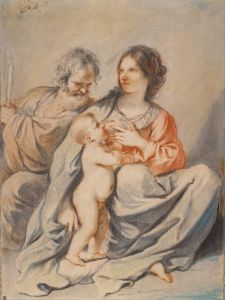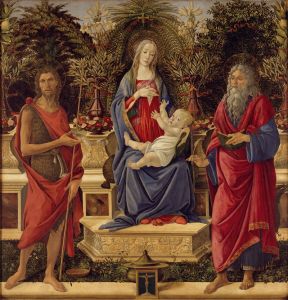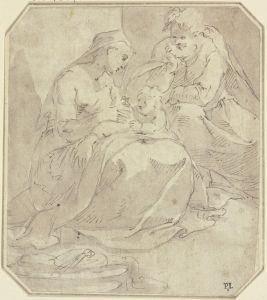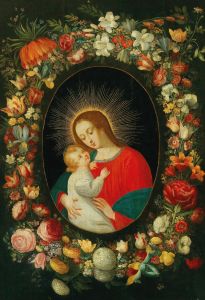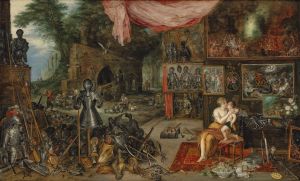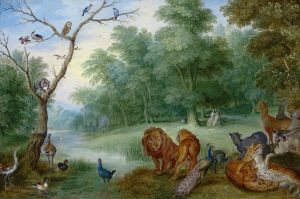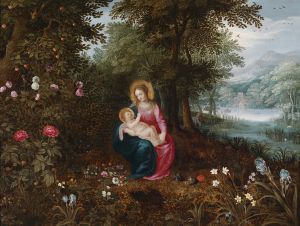
De Heilige Familie Met Johannes
A hand-painted replica of Jan Brueghel the Younger’s masterpiece De Heilige Familie Met Johannes, meticulously crafted by professional artists to capture the true essence of the original. Each piece is created with museum-quality canvas and rare mineral pigments, carefully painted by experienced artists with delicate brushstrokes and rich, layered colors to perfectly recreate the texture of the original artwork. Unlike machine-printed reproductions, this hand-painted version brings the painting to life, infused with the artist’s emotions and skill in every stroke. Whether for personal collection or home decoration, it instantly elevates the artistic atmosphere of any space.
Jan Brueghel the Younger, a prominent Flemish Baroque painter, is known for his detailed and vibrant works that often depict religious themes, landscapes, and allegorical subjects. One of his notable paintings is "De Heilige Familie Met Johannes," which translates to "The Holy Family with John." This artwork exemplifies Brueghel's skill in combining religious iconography with the lush, detailed backgrounds that were characteristic of his style.
Jan Brueghel the Younger was born in 1601 in Antwerp, into a family of artists. He was the son of Jan Brueghel the Elder and the grandson of Pieter Bruegel the Elder, both of whom were significant figures in the Northern Renaissance. Jan the Younger was trained by his father and inherited his workshop, continuing the family tradition of painting. His works are often noted for their meticulous attention to detail and vibrant use of color, qualities that are evident in "De Heilige Familie Met Johannes."
"The Holy Family with John" depicts the Virgin Mary, the Christ Child, Saint Joseph, and John the Baptist as a child. This composition is a common theme in Christian art, symbolizing the close relationship between Jesus and John the Baptist, who would later play a significant role in the New Testament as the forerunner of Christ. In Brueghel's depiction, the figures are often set against a richly detailed landscape, filled with flora and fauna, which serves to enhance the divine nature of the scene.
Brueghel's painting is characterized by its intricate detail and vibrant palette, typical of the Flemish Baroque style. The artist's use of color and light creates a sense of depth and realism, drawing the viewer into the serene and harmonious world of the Holy Family. The inclusion of natural elements such as flowers, trees, and animals reflects Brueghel's interest in nature and his ability to integrate these elements seamlessly into his compositions.
Jan Brueghel the Younger was known for collaborating with other artists, including Peter Paul Rubens, one of the leading figures of the Flemish Baroque. While there is no specific evidence to suggest that Rubens collaborated on "De Heilige Familie Met Johannes," their partnership on other works highlights the interconnected nature of the artistic community in Antwerp during this period.
The painting's historical context is significant, as it was created during a time when religious art played a crucial role in both public and private devotion. The Catholic Church was a major patron of the arts, commissioning works that would inspire faith and convey religious narratives to the faithful. Brueghel's depiction of the Holy Family would have served as both a devotional image and a testament to the artist's skill in rendering complex religious themes with clarity and beauty.
Today, Jan Brueghel the Younger's works, including "De Heilige Familie Met Johannes," are appreciated for their artistic merit and historical significance. They offer insight into the religious and cultural milieu of 17th-century Flanders and continue to be studied and admired by art historians and enthusiasts alike. Brueghel's ability to blend religious themes with naturalistic detail ensures that his paintings remain enduring examples of the Flemish Baroque tradition.







